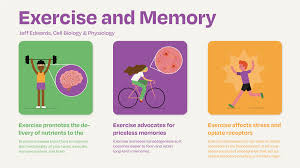Discover the science behind cardiovascular exercise and how it benefits your body. Learn how cardio improves heart health, boosts metabolism, and enhances mental well-being.
Cardiovascular exercise, commonly known as cardio, plays a crucial role in maintaining overall health. Whether it’s running, cycling, swimming, or even brisk walking, engaging in cardio workouts has numerous benefits for the body and mind. But what makes cardio so effective? In this article, we’ll delve into the science behind cardiovascular exercise and explore its profound impact on your body.
What Is Cardiovascular Exercise?
Cardiovascular exercise is any physical activity that raises your heart rate and keeps it elevated for an extended period. It primarily engages large muscle groups and enhances the efficiency of the cardiovascular system, which includes the heart, blood vessels, and lungs.
Types of Cardiovascular Exercise
- Aerobic Exercise: Activities like jogging, swimming, and cycling that rely on oxygen to generate energy.
- Anaerobic Exercise: High-intensity workouts like sprinting and high-intensity interval training (HIIT) that do not rely on oxygen as the primary energy source.
- Low-Impact Cardio: Exercises such as walking, rowing, or using an elliptical machine that are easier on the joints.

How Cardiovascular Exercise Benefits Your Body
1. Improves Heart Health
Cardiovascular exercise strengthens the heart muscle, allowing it to pump blood more efficiently. Regular cardio reduces the risk of heart disease, lowers blood pressure, and improves circulation. Studies suggest that just 150 minutes of moderate-intensity cardio per week can significantly reduce cardiovascular risks.
2. Enhances Lung Function
Cardio increases lung capacity and efficiency by improving oxygen uptake and delivery. Over time, this leads to better endurance and stamina, making daily activities easier.
3. Boosts Metabolism and Weight Loss
Engaging in cardio helps burn calories and increases metabolic rate. High-intensity cardio, like HIIT, can lead to excess post-exercise oxygen consumption (EPOC), which means you continue burning calories even after your workout.
4. Regulates Blood Sugar Levels
Cardio workouts improve insulin sensitivity, helping regulate blood sugar levels and reducing the risk of type 2 diabetes. Activities like brisk walking after meals can prevent blood sugar spikes.
5. Enhances Mental Health and Reduces Stress
Exercise releases endorphins, also known as “feel-good” hormones, which reduce stress, anxiety, and symptoms of depression. Regular cardio also improves cognitive function and memory by increasing blood flow to the brain.
6. Strengthens Immune System
Moderate cardio exercise enhances the immune system by promoting circulation and reducing inflammation. It helps the body fight off infections and reduces the risk of chronic diseases.
7. Supports Joint and Bone Health
Weight-bearing cardio exercises like running or jumping rope stimulate bone density, reducing the risk of osteoporosis. Low-impact activities like swimming and cycling provide cardiovascular benefits without putting stress on the joints.
8. Improves Sleep Quality
Regular cardio exercise helps regulate sleep patterns by promoting deeper and more restorative sleep. Engaging in moderate-intensity workouts in the morning or afternoon can improve overall sleep quality.
How to Incorporate Cardio Into Your Routine
- Start Slow: Begin with low-intensity activities like walking before progressing to higher-intensity workouts.
- Mix It Up: Combine different forms of cardio, such as swimming, cycling, and HIIT, to keep workouts engaging.
- Set Goals: Aim for at least 150 minutes of moderate-intensity or 75 minutes of high-intensity cardio per week.
- Listen to Your Body: Pay attention to signs of fatigue or discomfort and adjust your routine accordingly.
The science behind cardiovascular exercise highlights its immense benefits for heart health, metabolism, mental well-being, and overall fitness. Whether you’re looking to improve endurance, lose weight, or boost mood, incorporating cardio into your lifestyle is a powerful way to enhance your well-being. Start small, stay consistent, and enjoy the lifelong benefits of cardiovascular fitness.
Frequently Asked Questions (FAQ)
1. How often should I do cardiovascular exercise?
The American Heart Association recommends at least 150 minutes of moderate-intensity or 75 minutes of high-intensity cardio per week.
2. What are the best types of cardio for weight loss?
High-intensity interval training (HIIT), running, cycling, and swimming are among the best exercises for burning calories and promoting fat loss.
3. Can I do cardio every day?
Yes, but it’s important to vary intensity levels and incorporate rest days to prevent overtraining and injuries.
4. Is walking considered a good form of cardio?
Yes, brisk walking is an excellent low-impact cardio exercise that improves heart health and burns calories.
5. Does cardio help build muscle?
Cardio primarily burns calories and improves endurance, but combining it with strength training can help preserve and build muscle mass.